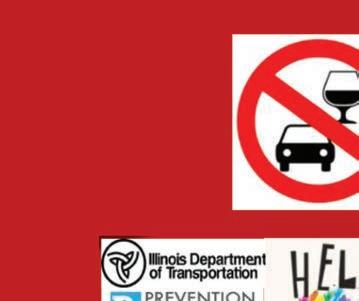




Set ex-girlfriend’s building on re after learning she was dating his friend, o cials say
By CHARLES THRUSH Block Club Chicago
A West Side man set his for mer girlfriend’s apartment building on fire after learning she was dating his friend, killing four people and displacing nearly 30 others, according to authorities.
Lontray Clark, 23, has been charged with murder and attempted murder in the June 26 apar tment fire in Austin that killed a 5-year-old boy, two adult sisters and a 76-year-old man, police announced Friday.
Clark’s for mer girlfriend, a 23-year-old woman, lived in the apar tment building at 5222 W. North Ave. On June 25, Clark was texting the woman to ask if she was dating a friend of Clark’s, prosecutors said in court Saturday.
The woman posted a selfie with her new boyfriend to social media, and Clark sent the photo to the woman and said he knew she was dating his friend.
Early on June 26, Clark drove to pick up another man before going to a West Side gas station and filing an anti-freeze container with gasoline,
See ARSON on pa ge 8


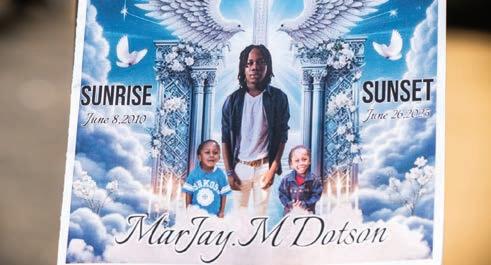
Executive
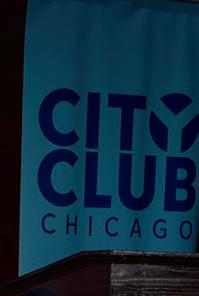

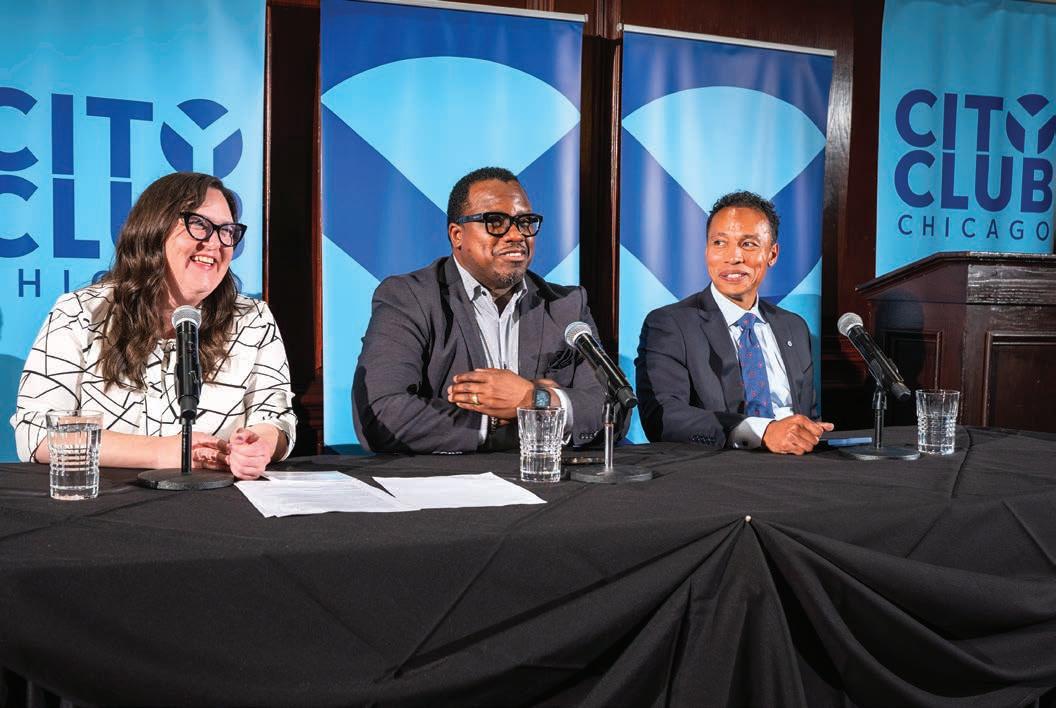
The City Club of Chicago hosts a panel highlighting Austin Coming Together’s Darnell Shields and the Aspire
By JESSICA MORDACQ Staff Reporter
The story of revitalizing Austin, specifically through the Aspire Center, is spreading throughout the City of Chicago.
The City Club of Chicago, the longestrunning civic forum in Chicago, hosted a fundraising panel discussion July 9 at Maggiano’s Banquets in River North. The conversation revolved around community transformation in disinvested communities, specifically as it relates to the Aspire Center for Workforce Innovation in Austin, which opened last month after years in the making. It also highlighted the importance of partnerships
in such neighborhoods and included representatives from BMO bank and United Way of Metro Chicago, which aims to create equitable opportunities for Chicagoans
According to Darnell Shields – executive director of Austin Coming Together and a panel participant – Austin has the most community-based-led projects in Chicago right now. And he said his neighborhood got there by building relationships between residents, nonprofits,
See CITY CLUB on pa ge 8










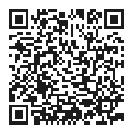







and inde nitely shuttered its labor and deliver y, postpar tum and nurser y units
By JESSIC A MORDACQ Staff Reporter
The after noon of July 3, six staf f members in the middle of their shifts at West Suburban Medical Center’s Family Birthplace were escorted out of the hospital by security, according to multiple sources who work on the floor that consists of the labor and delivery, postpartum and nursery units
West Suburban staff said they were told the three units would be closed indefinitely, and they would be suspended without pay, because of a shortage of nurses. But timesheets shared with Austin Weekly News show nurses were fully staffed on Thursday, July 3 and through that weekend.
Manoj Prasad – CEO of Resilience Healthcare, which bought West Sub and Weiss Memorial Hospital in Chicago’s Uptown neighborhood in December 2022 – and Carolyn Fitzpatrick, the hospital’s chief medical of ficer, have not responded to multiple interview requests.
As of July 10, suspended staf f have received no of ficial documentation or communication from any form of leadership at West Suburban. They don’t know if they should call of f scheduled shifts or if they’ ll be penalized if they don’t, and they’re using paid time of f during the period of radio silence Family Birthplace nurses haven’t heard any explanation to clarify why they were suspended from the floor or when it might reopen – including on the day they were dismissed.
On July 3, Family Birthplace nurses heard rumblings of the floor closing from three doctors and a custodian, but no one told them directly. Just before noon, the hospital’s head of security, four security guards and representatives from opera-
tions and HR came to the unit and asked the floor’s staf f to meet. The operations representative told staf f the unit was suspended for the weekend, and until further notice, because of a shortage of nurses
The operations representative did not retur n Austin Weekly News’ request for comment.
Staf f told the hospital representatives that they had adequate coverage – typically three nurses working in the labor and delivery unit and one in the nursery – and asked how long the suspension would last, but a representative said they wouldn’t be answering questions at that time and told staf f to tur n in their unit phones, badges and gather their items to be escorted from the hospital.
“They wouldn’ t even let us ask any questions. T hey were ag gressively against it,” said one Family Bir thplace nurse, who requested anonymity for fear of retribution. T he nurse added that they feared physical forced removal from hospital administration.
“They might as well have had a cattle prod,” another nurse said. “This treatment was very traumatizing.”
While it’s not ille gal to abruptly ter minate employees this way, an Illinois Department of Public Health spokesperson previously told Austin Weekly News that the move is “concer ning” and that the department would “be gathering more information about this action to ensure the hospital complies with its obligations under the Hospital Licensing Act.”
Nurses say they’ve been working as a skeleton crew since November, when midwives and family medicine physicians at West Sub were told they could no longer deliver babies at the hospital.
“They were bringing in most of our patients,” said the Family Birthplace nurse. But even with fewer mothers and infants on the floor, “if we were short [on nurses], no one cared.” Seemingly, until this month.
When the Family Birthplace floor closed on July 3, sources say there were no patients on the floor. Though one doctor was reportedly told to not cancel scheduled c-sections for the following week, he was later told to reschedule them at dif ferent hospitals
With the current uncertainty of the Fam-
ily Birthplace, sources said locals are still showing up at West Suburban to give birth.
“Although the unit is closed, the community has not been adequately notified,” the nurse said, citing several women who have been tur ned away
In late June, West Sub admitted 22 patients from Weiss Memorial after the Uptown hospital’s HVAC system failed. While a hospital spokesperson said West Sub replaced its HVAC system last year, a Freedom of Information request filed with the village of Oak Park to see public records of the hospital replacing its HVAC yielded no results.
And now there are reports of dangerously high temperatures at the Oak Park hospital, too
The Family Birthplace closure comes after multiple nurses on the floor filed complaints with OSHA about the rising temperatures and lack of cooling measures inside West Suburban.
According to documentation showing one such complaint on June 27, OSHA responded that it had contacted West Sub administration and given them five business days to correct the hazards, or until July 4.
“You can’t help but think it’s retaliatory,” said a Family Birthplace nurse, who was among those suspended the day before.
According to multiple sources, temperatures have reached up to 90 de grees on the floor’s postpartum unit and 87 de grees in the nursery.
“It should not be that way,” a nurse said. The nurse added that rising temperatures aren’t just an issue at the Family Birthplace, but also in operating rooms on other floors, which have been temporarily closed down because of the heat. “We are a microcosm of the whole hospital right now.”
And though the nurses want to know what their future looks like at the hospital, they are also wor ried about their patients.
“We care about our community, and we care about our coworkers. We don’t want to abandon the people we serve. We work in a hospital in an underserved community for a reason,” one nurse said. With a closure like this, “It’s the community that suf fers.”

Interim Executive Director Max Reinsdorf
Sta Repor ter Jessica Mordacq
Contributing Editor Donna Greene
Senior Audience Manager Stacy Coleman
Fellow Vanessa Lopez
Repor ting Par tners Block Club Chicago
Columnists Aisha Oliver
Design/Production Manager Andrew Mead
Editorial Design Manager Javier Govea
Designers Susan McKelvey, Vanessa Garza
Senior Media Strategist Lourdes Nicholls
Marketing & Adver tising Associate Emma Cullnan
Development Manager Mary Ellen Nelligan
Circulation Manager Jill Wagner
Operations Associate Susan Babin
Special Projects Manager Susan Walker
Senior Advisor Dan Haley

BOARD OF DIRECTORS
Chair Eric Weinheimer
Treasurer Nile Wendorf
Deb Abrahamson, Mary Cahillane, Steve Edwards, Judy Gre n, Horacio Mendez, Charles Meyerson
Darnell Shields, Audra Wilson
HOW TO REACH US
141 S. Oak Park Ave., Oak Park, IL 60302
PHONE 773-626-6332 • FAX 708-467-9066
CIRCULATION Jill@oakpark.com
ONLINE www.AustinWeeklyNews.com
Austin Weekly News is published digitally and in print by Growing Community Media NFP It is distributed free of charge at locations across Austin and Gar eld Park. Our hours are Monday through Friday 9 a.m. to 5 p.m. Adver tising rates are available by calling our o ce. Printed entirely on rec ycled paper © 2025 Growing Community Media NFP
By MICHAEL LIPTROT Block Club Chicago
Family, friends and community leaders gathered last week to celebrate the life of Marjay Dotson, the 15-year-old known for his humor and love of family who was fatally shot outside a West Side pool.
Funeral services for Marjay Martell “MJ” Dotson were held at Healing Temple Church of God in Christ, 4941 W. Chicago Ave., in Austin. Marjay was one of two teens shot June 26 by Chicago Park District lifeguard Charles Leto, with the teenage boy being fatally struck in his back.
Family and friends were united in describing Marjay as a happy, fun-loving person who saw the best in those around him. From playing football for his school and community to playing Call of Duty with friends, fond memories were recounted by around 20 community members who spoke at the funeral.
Some speakers also decried the violence affecting local teens and expressed a desire for change throughout the West Side in the wake of the shooting
“Chicago is not a place where this violence is going to continue,” one funeral speaker said.
Marjay was with another 15-year-old boy and the then-14-year-old Jeremy Herred on June 26 at Douglass Park, 1401 S. Sacramento Drive, when the other 15-year-old boy got into an argument with Leto over the lifeguard’s bicycle, prosecutors have said.
When the other 15-year-old reached towards Leto’s bike, the 55-year-old lifeguard opened fire on the boys, striking Marjay as he was turning away from the gunfire. Marjay was rushed to a local hospital before being pronounced dead
Jeremy Herrod was struck in his neck and has just woken up from a coma, his relatives shared at the funeral for Marjay. Leto has since been charged with murder and attempted murder in connection with the shootings.
The community has since rallied around Marjay and Herrod, demanding answers from the park district and making sure Marjay’s life leads to change.
Marjay was a participant in the city’s One Summer Chicago, a youth summer jobs program that partially seeks to stem violence during the months it often peaks, Mayor Brandon Johnson confirmed last week.
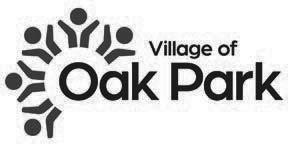

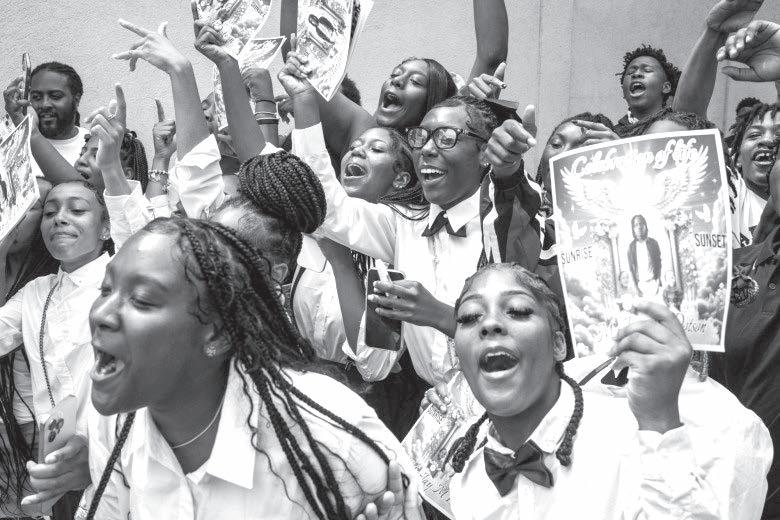
Classmates cheer out “Long Live Marjay” as family and friends gather to remember Marjay Dotson at his funeral at Healing Temple Church of God in Christ, 4941 W. Chicago Ave. in Austin on July 9.
Johnson started a press conference regarding the summer jobs program’s expansion with a moment of silence for Marjay.
“Today is a good morning, but yet we are still riddled with many challenges,” Johnson said. “So I do want to just take a moment to acknowledge the family of one of our fellow One Summer Chicago participants, who was taken away from us with senseless gun violence.”
David F lores taught Marjay art this past school year while he was a freshman at UIC Colle ge Prep, 1231 S. Damen Ave. F lores remembered Marjay as “a light” of positivity in his classroom.
“There was never a moment you didn’t notice he was there, just smiling all the time,” F lores said. “Just a nice, playful, loving individual. He made every day joyful for all of us.”
Tamika Har ris is a family friend of Marjay’s, knowing him since birth. She remembers seeing the boy playing football with his best friend just before his death and enjoyed seeing the “good old fun” he had in his community
Harris lost her 21-year-old son to gun violence in 2021 and described learning of the shooting of Marjay and Jeremy as both a triggering reminder of her son’s death and a reminder that change is needed in West Side communities.
“If you were that terrified, why work in our community? Why be in our community?” Harris said of Marjay’s shooter. “Our community is tired of loss.”
During a devotion by Pastor Marvin Hunter, a relative of Jeremy Her red, Hunter announced that the boy was starting to show signs of recovery.
“I want to give a praise report that Jeremy has opened his eyes,” Hunter told the funeral crowd, which then thundered in applause
Hunter also told Block Club that plans have been made with the park district to meet with both family and community advocates with the Chi North Lawndale Chamber of Commerce regarding the shooting.
A letter, penned by the local chamber and signed by Hunter, calls for change in park district practices and improvements to community relations at Douglass Park
Specifically, neighbors want to know how Leto was hired as a lifeguard after he alle gedly shot two dogs — killing one — and caused a hours-long standof f with police two years ago in Lakeview. Leto was hired as a lifeguard months after the incident, the Sun-Times reported.
The chamber of commerce said it was alarmed by the district’s statement that Leto passed a background check and argued that this incident should have precluded Leto from being hired by the agency.
“Our parks must be sanctuaries. Our children must be safe. And our community must be respected — not merely acknowledged but actively included in the leadership and decision-making process moving forward,” the letter read
Noah Asimow contributed re porting.
By HECTOR CERVANTES Contributing Reporter
Around 30 residents, youth and community leaders came together on Saturday, July 12 for a powerful conversation about the future of Austin’s Central Avenue and its Creating Space location, sharing ideas and concerns as momentum builds to transform the corridor into a thriving, people-centered destination.
Hosted by Territory, a youth-based design studio in Austin, the community conversation featured discussions on public art, placemaking, cultural identity and land ownership, offering neighbors a chance to help shape ongoing redevelopment ef for ts for Creating Space, a public art display in an empty lot across from the for mer Pink House at 557 N. Central Ave.
Creating Space was developed by Territory to transform a for merly troubled lot into a community-driven art and gathering space that reflects neighborhood voices and addresses issues of safety, identity and ownership. Creating Space officially opened last Oct. 12.
The conversations began with Territory addressing a letter that was written by a group of residents expressing the unintended consequences of Territory’s mini-park activation.
In the letter, it supported Territory’s mission and stated that the current setup had become a hotspot for drug activity, sex work and loitering by re gistered sex offenders, endangering youth and families. The letter called for the removal of the mini-park, proposing a youth-designed community garden in its place and greater collaboration on long-term safety and land use solutions.
After discussing the letter, Dr. L. David Stewart, Territory’s director of design practice, led a panel and a discussion with community members.
Panelists included 15th District Officers Michelle Williams and Jill Camplegi; artist and Austin resident Vanessa Stokes; La’Shawna Bundy, Austin Coming Together’s land trust coordinator; and Jenna Pollack, a consultant who has been working with the Oak Park Re gional Housing Center on building community land trusts in West Cook County.
The panel aimed to address concerns raised by residents about recent developments at Territory’s art garden and broader issues along Central Avenue.
Stewart referenced American singer-songwriter Erykah Badu’s quote, “I’m an artist and I’m sensitive about my ish,” to highlight Territory’s protective stance toward the youth’s creative work and the care they put into the project.
“But in community design, you can’t be sensitive because it involves everybody,” Stewart said.
When Stewart asked what their initial thoughts were
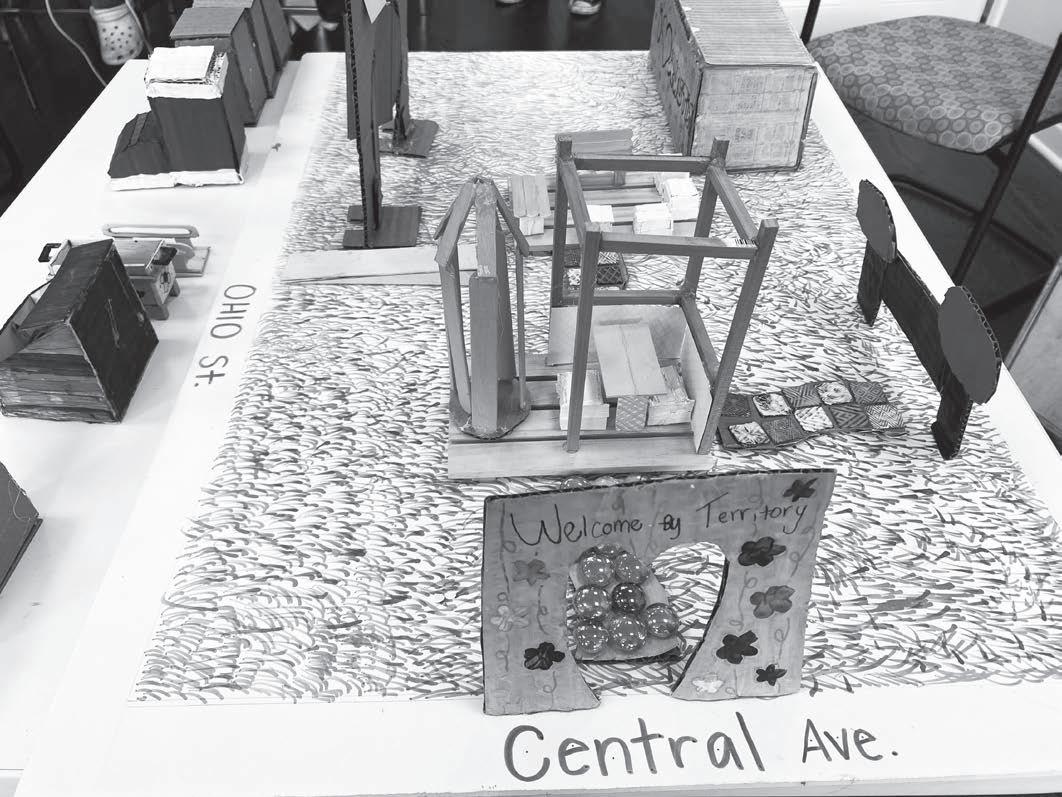
Creative Space aims to build co mmunity through conversation.
upon hearing the letter, the panelists responded adding in their own perspective from their backgrounds.
“(The letter) is making people in the community feel heard, or at least like they have a voice in the matter. Even if they don’t necessarily like it, it’s sparking something within them,” Bundy said.
For Pollack, the letter feels like the visible part of the iceberg, while beneath the surface lies a much larger conversation about systems of care, support, and community.
“How are we acknowledging the ecosystem of concerns and issues at play — not just the symptoms or what’s visible on the surface? It feels clear to me that we’re calling for a deeper reflection on that broader ecosystem, the larger system at work,” Pollack said.
When it was time for open discussion, participants grappled with tensions between community concerns about crime and the desire to avoid exclusionary practices like fencing, which may send har mful messages.
Sid Zulani, a member of the audience, spoke and stated that instead of broadly discussing “crime,” he suggested reframing the issue by distinguishing between people causing harm and those being harmed. His proposed focus was to shift from reducing crime to reducing harm.
“Territory is the only design firm in Austin. We can’t do this work without the community. I know the work is valued and appreciated. How can we make it better for the community? We need to learn who the community is,” Stewart said.
I am de ep ly hear tbroken by the unforeseen and tragic p assing of Mr Brad Cumming s.
Brad was more than a journalist for the Austin Voice — he was a longstanding resident of the Austin community. His heartfelt advocacy showed his love for our neighborhood in everything he did. His re porting was purposeful and eng aging, and he never missed an opportunity to uplift the stories that matter. Just this past Saturday, Brad kindly joined us at the Beef Up the Block event to share in the pride and unity that de-
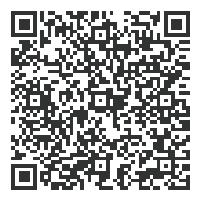
fine our community To Brad’s f amily, friends, and colleagues at the Austin Voice, please accept my heartfelt condolences. His dedication, warmth, and commitment to telling the stories of our community will truly be missed. May we honor his memory by continuing to stand tog ether and carry forward his spirit of service and care
Camille Y. Lilly State Re presentati ve Assistant Majority Leader



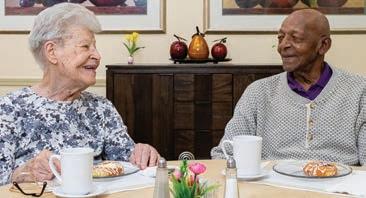
By BRENDAN HEFFERNAN Staff Reporter
Last month, Cook County leaders debuted a new publicly accessible data tool to provide insights into trends in re gional criminal justice issues.
The “Cook County Criminal Justice Dashboard” was created with funding from the MacArthur Foundation’s Safety and Justice Challenge and developed in conjunction with Loyola University of Chicago’s Center for Criminal Justice researchers, according to county officials.

The tool’s debut follows large changes to the county’s criminal justice administration, including the elimination of cash bail in 2023 and a sharp decrease in Chicago arrests that’s largely held steady since the
COVID-19 Pandemic. The tool includes statistics on incidents and arrests, criminal case filings, jail bookings and releases, pretrial release decisions, sentences and prison and parole populations, according to county officials.
“The Cook County Criminal Justice Dashboard reflects the ongoing collaboration among our justice system partners,” said Cook County Board President Toni Preckwinkle. “It shows our shared commitment to transparency and to making the criminal legal system work better for the public. We’re proud to share this tool to help residents better understand how the justice system affects people and communities across Cook County.”
The dashboard project sources data from the Office of the Chief Judge, the Cook County State’s Attorney, Cook County Sherif f’s Office, the Clerk of the Circuit Court of Cook County and the Law Office of the Cook County Public Defender, according to county officials. It features data dating back to the be ginning of 2018.
“With these tools, I hope the public will be able to gain a better understanding of
By HECTOR CERVANTES Contributing Reporter
Chicago marked a major milestone on July 10 with the official naming of its first city-designated safe zone at Alt Space Chicago, honoring the Austin Safety Action Plan (ASAP) safe zone initiative.
ASAP is a youth-led initiative launched by Root2Fruit Youth Foundation to create a model for community safety by activating designated safe zones. A safe zone refers to a designated area where young people lead cleanup ef forts, plant trees and build community relationships as part of their strategy to “Protect Our Hood.”
Over 75 people attended the July 10 naming, filling the space at Alt Space Chicago so quickly that organizers had to bring out extra chairs to accommodate the crowd.
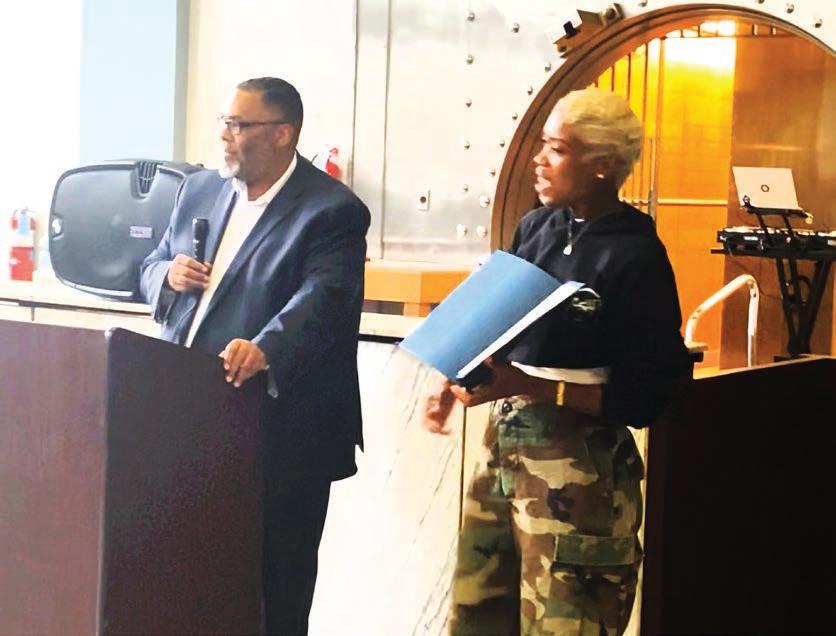
HEC TO R CERVANTES
Alderman Chris Taliaferro praises Aisha Oliver’s work on the Austin Safety Action Plan.
mitment to her community, especially the youth of Chicago’s West Side. She describes how the Root2Fruit Youth Foundation and the ASAP initiative grew from lived experience, mentorship and a call to action following the death of a three-year-old.
“And I decided that day: enough is enough. Prayer is one thing, but you can’t just pray — you have to act. Where’s the acvation? Let’s be proactive, not reactive,” iver said.
Oliver emphasizes that the project wasn’t just about creating a program — it was about building a family-like environment where young people felt safe, loved and supported. Over time, that support turned into real-life bonds, shared meals, celebrations and mentorship that extended far beyond surface-level engagement.
Alderman Chris Taliafer ro introduced a resolution adopted by the Chicago City Council honoring Aisha T. Oliver—founder of the ASAP Safe Zone and the Root2Fruit Youth Foundation — along with members of the ASAP Safe Zone: Lester Bradford, Khoe Hollins, Travail Hollins, Darian German, Davonte Dudley, Jaquez Beasley, Michael Britton, Demarius Gillespie, LiWayne Lee, and Jaysaun Turnipseed, for
Continued from previous pa ge
our criminal legal system, including the impact policy can have on a person after an arrest,” said Cook County Public Defender Sharone R. Mitchell. “By bringing data from all our offices together in a shared commitment to transparency and accountability, I hope we can promote discussions and inspire critical analysis that provides a more holistic view of how our courts operate, instead of only focusing on stories about the outliers.”
The tool breaks down quarterly court operation statistics by jurisdiction, including District 4, which takes cases from west
their consistent mentorship of youth in the 29th Ward. Oliver is an occasional Austin Weekly news columnist.
At the naming, Taliafer ro spoke alongside Oliver and Jordan Campbell, co-founder and director for Alt Space Chicago.
“We wish to extend our congratulations as we take this opportunity to celebrate the naming of the ASAP Safe Zone in the 29th ward,” Taliafer ro said.
Campbell emphasized that the most valu-
Cook County municipalities li ke Oak Park, River Forest, Forest Park, Berwyn, Brookfield and Riverside. So far in 2025, 8% of all Cook County criminal cases have come from District 4 communities, a nearly identical share to the number of cases coming out of the county’s southern and southwestern suburban court districts, according to county statistics.
The number of criminal cases filed in the county rose last year, although it is still far from the system’s pre-COVID heights. In 2024, the county-wide system processed 61,507 new criminal charges, compared to 55,233 in 2023 and 86,434 in 2019. There were 16,653 new criminal charges filed in
able part of the lecture is the opportunity to learn from a diverse group of voices and to use one’s God-given gifts — whether speaking or helping others, with strength and purpose to serve the community.
“It’s not only available, but it’s accessible. There’s a difference. So when we talk about accessibility, this means that (Root2Fruit) are doing it, and that you can make this a safe space at home,” Campbell said.
Oliver reflects on her deep-rooted com-
the first quarter of this year, according to county statistics.
District 4 criminal case filings topped 5,000 for the first time since 2019 last year with 5,248. There were 1,308 new filings in District 4 in the first quarter of 2025, according to county data.
The most common charge in District 4 and Cook County on the whole is domestic battery or aggravated domestic battery, of which there were 208 cases in 2025’s first quarter, according to county statistics.
The tool presently only features Chicago crime data. The data featured in the tool re garding incident reports does not show a proportional decrease in the annual
“You have to truly feel the community. Community is something you have to acly engage in. Many people use the term ‘community engagement’ way too loosely — without giving it the time, effort, energy, or authenticity it deserves,” Oliver said. “The reason I can stand here so proudly and boldly, and move the way I do unafraid, is because I am very straightforward. If I don’t like something, I speak up—I don’t wait.” When asked how it feels to be reco gnized at the first officially reco gnized space in Chicago, Dudley described it as a surreal moment.
“So for us to have been putting in the work for this long and finally get reco gnized —and for people to shine a light on us and say we’ve been doing this kind of work — I’m really appreciative of it. It’s a surreal moment, and it’s something meaningful for the community,” Dudley said.
number of incidents reported to police by residents since, suggesting that the large decrease in arrests and criminal charges is likely the result of shifting law enforcement strategies.
The new dashboard will allow residents to understand the facts of the local criminal justice system better than before, the tool’s developers hope.
“Our hope is that engaging with a variety of data, all in one place, helps those looking to understand how the system functions to better explore their questions and gain insights,” said Don Stemen, Co-director of the Loyola University of Chicago’s Center for Criminal Justice Research
from page 1
public and private institutions.
“Leadership like that at every level –whether it’s government, civic, corporate, foundational – being able to work together, but also identifying our role and honoring each other’s expertise, that’s how we were able to cultivate this culture in our community and how it started to yield things,” said Shields, who is on the board for Growing Community Media, the parent company of Austin Weekly News. “You can’t have all of this progress without that type of union.”
This multi-sector collaboration has been a central tenant of ACT’s mission since its 2010 launch to support West Side social service institutions. Back then, and in developing the Aspire Center a decade later, ACT met with a range of community members, from pastors and elected officials to local nonprofits.
“We’ve really had this mandate of building relationships between all of these different organizations, leaders and agencies so that people could acknowledge each other and reco gnize what role they could
actually play,” Shields said.
“A lot of why this works in Austin is because people are both allowed and encouraged to do what they do best,” said Dr Kimberlee Guenther, chief impact officer of United Way of Metro Chicago, who moderated the discussion. “Through building those relationships over years, there’s a lot of humility in the work in terms of people not trying to take on something that they’re not good at but really recognizing that there’s already somebody doing that work.”
Deferring to those with expertise is one of the backbones of ACT’s collaborative process. And once it had built a base of West Side partners, others wanted to join in the process.
“It really took that collaboration of having community-based organizations on the ground, working with an institution that has connection to the other sectors,” Shields said, to connect with organizations that have significant social and financial capital.
Also on the City Club panel July 9 was Guenther and Darrel Hackett, the U.S. CEO of BMO bank. ACT, BMO and United Way of Metro Chicago started working together in 2015.
BMO has been a significant contributor to United Way’s Neighborhood Networks,
a place-based approach to improve quality of life and reduce economic disparity in 17 Chicago neighborhoods, including Austin, by creating a resident-driven strateg y and priorities. To-date, BMO has invested nearly $20 million in Neighborhood Networks and has promised another $7.5 million over the next five years.
“Our purpose isn’t just to do the transactions and to facilitate the everyday movement of money. We want to make a little difference,” Hackett said. “To us, it’s not really about the money. It’s about making it sustainable and playing a real role.”
As one of the 10 largest banks in the country, BMO has been giving back to the communities its banks reside in for over 20 years. In 2019, BMO made its first contribution to Chicago’s Invest in South/West initiative with $10 million, the bank’s largest donation ever.
BMO was the lead corporate funder for the Aspire Center, where the bank is also a “market-rate tenant,” Hackett said. The continued partnership allows BMO to sustain support of the Austin community past initial financial investment.
“You see these partners showing up to support those things because it’s aligned, not only with their charitable interests, it’s aligned with their business interests,” Shields said. “If you can make a business case around how you support community,
it becomes part of the workflow . . . It builds care and capacity within a community.”
A big part of that, Guenther said, is transparency and honest communication with a community and its partners – even when things aren’t working.
“Having courage to say, ‘I’m going to step over that invisible barrier between us’ – that is so often rooted in resources and ideas that are put into place because folks with resources are the ones bringing them – and ‘We need to do things a little bit differently,’ at United Way, that was the moment that our model blew up and changed into something more adaptive, more dynamic, more responsive,” Guenther said.
Coming together for a shared purpose makes it easier for groups to have a communal vision, and to get people to rally around it.
“A lot of times there’s all these voices that are looking for these resources that are approaching these different groups,” Shields said. “But it’s only when you can speak in one voice that organizations or supporters can really hear and really know how they need to show up.”
“You cannot do this level of community development, business building, making our city better if we are not building these threads and these strands between us,” Shields added. “At the end of the day, all of it revolves around people.”
ex-girlfriend from page 1
Assistant State’s Attorney Sheri Bennet said in court, according to charging documents
Clark and his friend then went to a convenience store where Clark bought a black shirt, a face mask and a lighter Clark then drove to an alley near the apar tment building and left his car with the container of g asoline in hand. He later returned to his ca r, banged his hand on the car’s center console and told his friend that he just “lit they house on fire,” prosecutors said.
Just before 2 a.m. on June 26, the exgirlfriend and her new boyfriend awoke to the smell of smoke and realized the building was on fire. T hey attempted to leave the building but found that both exits had been engulfed in flames. T hey climbed out of a window to escape the fire, prosecutors said.
Firefighters responded to the scene and worked to extinguish the fire. They eventually made entry into the third floor of the building and found victim Brad Cummings, 76, Gina Brown Henry, 32, and 5-year-old Jayceon Henry, prosecutors said.
All three people were taken to local hospitals, where they were pronounced dead
Destiny Brown Henry, 28, was originally marked as missing but was recovered from the building the following day and pronounced dead, authorities said.
Two other residents of the building were taken to hospitals with injuries, including a 4-year-old boy who remained hospitalized as of last T hursday, prosecutors said. At least 27 people were displaced by the fire.
Cummings was the longtime editor, photo grapher and founder of the weekly
Austin Voice newspaper. Destiny Brown Henry and Gina Brown Henry were sisters who lived with other f amily in the building, loved ones said at a vigil after the fire. Destiny’s son is the boy who is still struggling for his life after the fire.
“[Destiny] was a great mother. You couldn’ t say enough about her. Her whole life was about this little boy, ” Margaret Womack, daughter of Destiny, said at the vigil. “There’s more f amily that should be here. But we’re letting them know that we’re here for them, and that we’re going to take the best care of Kyle that we can.”
The fire department found that the blaze was started by an ignitable liquid and that multiple origins of the fire were found, prosecutors said.
Clark was captured on surveillance camera filling up the container with g asoline and buying the clothes and lighter at the store. He was also seen in surveillance footage from the alley where he parked and he was later identified by his friend who accompanied him that night, prosecutors said.
Clark was ordered to be held in jail pending a trial. He was arrested July 9 in
downstate Springfield. He previously served 30 months in prison for a 2021 possession of a firear m despite a revoked FOID card and is facing two misdemeanor charges for resisting a police officer in Winnebago County, prosecutors said.
Clark’s public defender said he does not have a violent criminal record and that there is no surveillance footage that places Clark at the scene of the fire, according to the Chicago Sun-Times
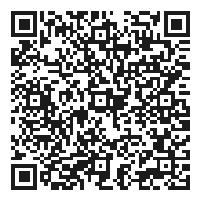
By MICHAEL LIPTROT Block Club Chicago
A West Side art center highlighting stories of social justice and the work of Black women artists is offering free programs all summer
The Chicago Urban Art Retreat Center is offering free workshops focused on storytelling through painting, talking, writing and music. Workshops are 2 p.m. Saturdays through Sept. 20 at the North Lawndale center’s Peace Park, 2101 S. Spaulding Ave.
“The thing that goes through [our programs] is social justice,” said center founder Dianna Long. “Everything’s about art and social justice, and we try to reach people where they’re at through our summer programming.”
The Saturday workshop series is centered on the theme of “Telling Our Stories.” Classes are open to people of all ages. A recent workshop featured African drumming and storytelling. The following weeks will focus
on clay face mask making and a musical jam session.
Inside the two-flat that houses the center, sweeping art galleries greet guests and flow into the house’s rooms. “Black Women Artists That Contributed To [The] Art World” is the current exhibit, and it features work from women artists from around the world, including Edmonia Lewis, Harriet Powers and Alma Thomas Cat Roberts, who grew up in Bronzeville, is featured in the gallery with her “Afropuff Gurlz” pieces, which are an Afrocentric depiction of “The Powerpuff Girls” cartoon characters.
Roberts said that being surrounded by strong female characters and representation in media is a priority in her work, and she’s grateful for the opportunities she’s had while working with the center since 2021.
“No one’s ever really been all that guaranteed in having any opportunities as an art-
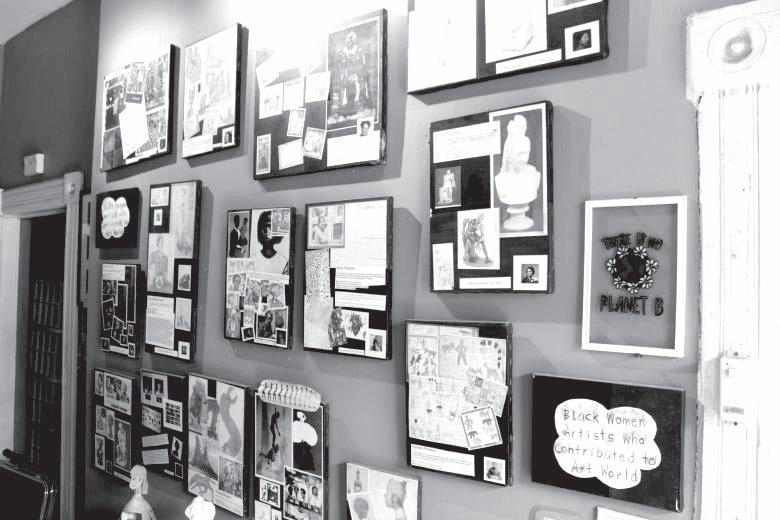
“Black Women Artists Who Contributed To Art World” gallery at the Chicago Urban Art Retreat Center, 1957 S. Spaulding Ave. in June
ist,” Roberts said. “There have been many Black female artists that might not have had as big of a representation or even in regular conversation have been discussed [at the center].”
Long, originally from New York state, founded the center as the Urban Art Retreat in 1984 while living in Portland. The center started with a mission of promoting community engagement through art galleries, workshops and events. She moved the program to Chicago in 1991, basing it in the for mer Uptown National Bank building.
The program bounced around locations through the ’90s before settling at its current home in the early 2000s. Services at the center expanded to include community volunteer
LETTER TO THE ED I TOR
work and social support services for low-income artists, including a residence program for up to five women. Rooting the program in North Lawndale represented a counter to disinvestment and promoting community arts, Long said.
“We felt like there were a lot of people here that could benefit from our programming,” Long said. “There were no programs that were looking to art as a way of serving people.”
The center’s summer workshop series will conclude with a Social Justice Stage Event Sept. 20 at 1959 S. Kedzie Ave. in a vacant lot near the Pink Line stop
For more information about the Chicago Urban Art Retreat Center, visit its website.
When someone we care about is struggling with substance use disorder (SUD), our first instinct is to help them in any way we can. In turn, we may offer them money, shelter, excuses, or repeated chances, believing our support for them will ease their suffering or eventually lead them to seek help. However, too often our well-meaning ef for ts become patterns of behavior that unintentionally allow the addiction to continue or worsen. This ne gative cycle of behavior is known as “enabling,” which refers to specific behaviors that shield or protect a loved one from the ne gative con-
sequences of their substance use.
Enabling can look like covering for missed work, paying their bills, denying or minimizing the addiction, or avoiding difficult conversations to keep the peace. These actions seem compassionate, but they create an environment where the person with the SUD does not have to face the reality of their choices. Although enabling often stems from a place of love, it can prevent the person from fully reco gnizing the impact of their behavior and may delay their motivation to seek treatment. Unfortunately, enabling behaviors are
prevalent among family members and close friends because watching someone self-destruct is painful, and stepping in often feels like the only way to reduce the chaos. In many families, addiction brings feelings of guilt, shame, and confusion. People may also fear losing the relationship or provoking anger by setting boundaries. As a result, enabling becomes a coping mechanism, one that helps the enabler feel some sense of control over an otherwise uncontrollable situation. However, enabling may bring temporary relief but often causes long-term harm.
Therefore, helping someone with a substance use disorder means being honest, setting healthy boundaries, and supporting recovery, not addiction. This might include refusing to give money, requiring that they attend treatment to remain in your home, or no longer lying on their behalf. It means expressing love while making it clear that their behavior is unacceptable. These actions can feel harsh, but they are often the push needed for someone to reco gnize the seriousness of their condition.
Dr. Charles C. Brown Malcolm X Colle ge


IN THE CIRCUIT COURT OF COOK COUNTY, ILLINOIS COUNTY DEPARTMENTCHANCERY DIVISION
NATIONSTAR MORTGAGE LLC
Plaintiff vs. UNKNOWN HEIRS OF ANGELA SMITH A/K/A ANGELA DENISE
SMITH, JOHN LYDON AS SPECIAL REPRESENTATIVE, UNKNOWN OWNERS AND NON-RECORD CLAIMANTS
Defendant 24 CH 6396 CALENDAR 58
NOTICE OF SALE
PUBLIC NOTICE is hereby given that pursuant to a Judgment of Foreclosure entered in the above entitled cause Intercounty Judicial Sales Corporation will on August 5, 2025, at the hour 11:00 a.m., Intercounty’s office, 120 West Madison Street, Suite 718A, Chicago, IL 60602, sell to the highest bidder for cash, the following described mortgaged real estate: P.I.N. 16-15-129-019-0000.
Commonly known as 4421 W. VAN BUREN ST., CHICAGO, IL 60624. The real estate is: multi family residence. The successful purchaser is entitled to possession of the property only. The purchaser may only obtain possession of units within the multiunit property occupied by individuals named in the order of possession.. Sale terms: At sale, the bidder must have 10% down by certified funds, balance within 24 hours, by certified funds. No refunds. The property will NOT be open for inspection. Prospective bidders are admonished to check the court file to verify all information.
For information call Sales Department at Plaintiff’s Attorney, Law Offices of Ira T. Nevel, 175 North Franklin Street, Suite 201, Chicago, Illinois 60606. (312) 3571125. 24-01930 INTERCOUNTY JUDICIAL SALES CORPORATION intercountyjudicialsales.com I3268808
IN THE CIRCUIT COURT OF COOK COUNTY, ILLINOIS COUNTY DEPARTMENTCHANCERY DIVISION TOORAK CAPITAL PARTNERS LLC Plaintiff vs. PUZON INVESTMENTS, LLC, LOAN FUNDER LLC SERIES 13443, THE HUNTINGTON NATIONAL BANK, AMSTERDAM CAPITAL SOLUTIONS LLC Defendant 24 CH 9537 CALENDAR 56 NOTICE OF SALE
PUBLIC NOTICE is hereby given that pursuant to a Judgment of Foreclosure entered in the above entitled cause Intercounty Judicial Sales Corporation will on August 11, 2025, at the hour 11:00 a.m., Intercounty’s office, 120 West Madison Street, Suite 718A, Chicago, IL 60602, sell to the highest bidder for cash, the following described mortgaged real estate: P.I.N. 16-27-204-004-0000.
Commonly known as 4149 W. CERMAK ROAD, CHICAGO, IL 60623. The real estate is: multi family residence. The successful purchaser is entitled to possession of the property only. The purchaser may only obtain
SALES CORPORATION intercountyjudicialsales.com I3269138

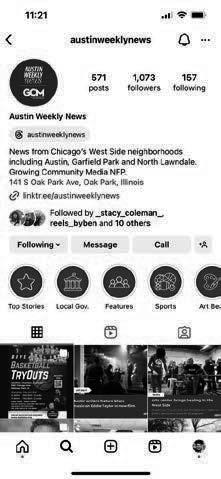


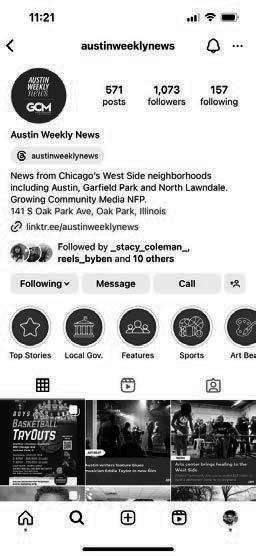
Submit events and see full calendar at austinweeklynews.com/events


















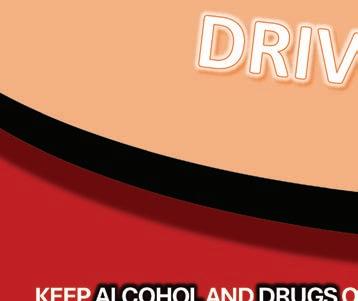






A message from The Prevention Partnership, Inc., sponsored through a grant from the Illinois Department of Transportation. Chicago Youth Impaired/Distracted Driving Prevention Initiative


